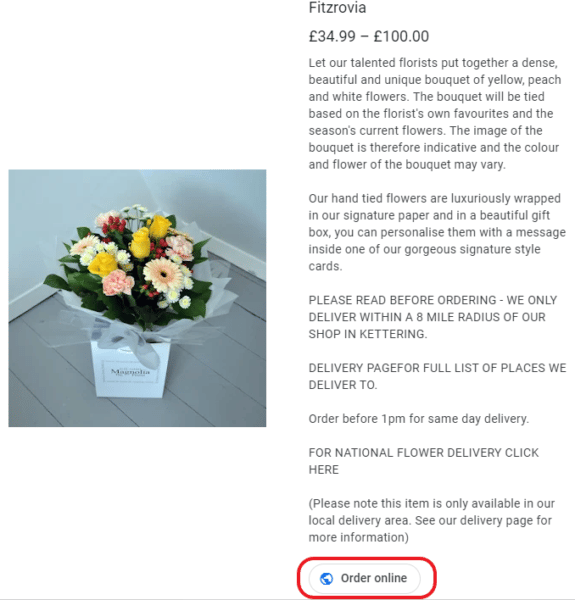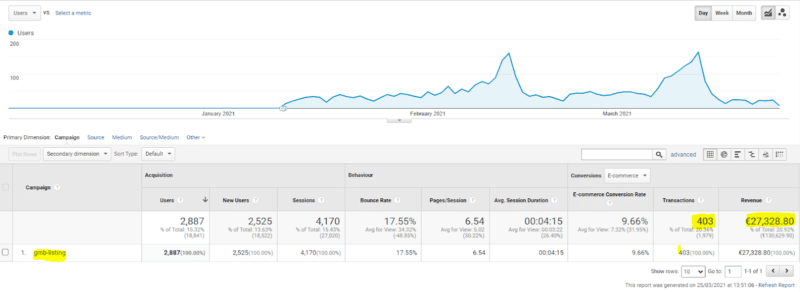How to turn your Google Business Profile into a revenue-generating channel
Before making a purchase, your customers are always looking for reviews and testimonials to reinforce and confirm their intent.
In the UK I worked with an agency that serviced 600 small businesses, a large percentage of which were florists. The intention of a flower shop customer can be one of the following:
- Look for seasonal floral arrangements (Valentine’s Day, Mother’s Day, etc.).
- Types of Flowers to Buy for Dinner.
- Learn how to make a Christmas wreath.
- Flower service for weddings.
When a prospect has a clear intent, two things can happen:
- They will start their influence journey on TikTok, Instagram or YouTube. Watch videos for floral arrangement inspiration or the most appropriate flowers for specific occasions.
- Go straight to Google to enter any of the following queries:
- Flower delivery + location
- Same day flower delivery
- Same day flower delivery + location
- Flower service for weddings
- flower subscription services
And this is where a well-optimized Google Business Profile (GBP) can become a significant influencer because of its reviews, information, images, and products.
An improved GBP will result in more leads from your listing, although you won’t rank as highly as other listings. Tweak the following elements to turn your Google Business Profile into a revenue-generating channel.
1. Info area: Categories
The category you choose has a significant impact on ranking at the local level. Your business’ primary categorization explains what it does (eg, law firm, dentist, plumber, hair salon, etc.). In addition, this will be the only category open to the general public.
In the example below, the primary category is ‘Florist’ and the additional category is ‘Flower Delivery’.

2. Reviews
According to BrightLocal’s most recent survey, approximately 77% of consumers “always” or “regularly” read online reviews when looking for local businesses.
Reviews are an increasingly important ranking component and conversion factor. They are vital for local businesses, not just to differentiate themselves, but to build credibility.
Google highlights reviews for branded searches and displays them prominently on your business profile.
Another important aspect of reviews is the constant replying, which encourages customers to leave reviews and increases your credibility.

Reviews can attract additional customers, provide insightful criticism, and highlight problems or successes in the customer service department.
Read Google’s policies on prohibited and restricted content and best practices for getting reviews. Contributors Joy Hawkins brings more insight into her post, 1 Star Review Attacks Plage Restaurants on Google.
3. Products

When updated regularly, the Products section can be a powerful lever for generating revenue. It’s ranked higher than the Services category, so it’s more prominent.
In this section you can include:
- Pictures.
- Call-to-action buttons.

This gives you the ability to match your customers’ search intent with relevant products, making it easier and faster for them to make a purchasing decision.
Did you know you can add products at the top of your local and map listings? Find out how here.
4. Pictures
Images strongly influence customers in their pre-sales research phase. Google makes information more useful by allowing users to perform searches using images and text and get relevant results.
However, adding images (especially logos) to the image section of your GBP can be tricky. Make sure the images you upload for your products, logos, and general imagery are high resolution.
When adding images to your product section, make sure they follow Google’s guidelines for business profile photos.
5. Posts
Publishing posts on your company profile is a great opportunity to promote a new product, event, workshop or special offer.
You can add call-to-action buttons to your posts to increase transactions, revenue, and most importantly, make it easier for your customers to complete a purchase.

Posts should not be used to turn keywords into topics and create unhelpful content to affect search results pages. It will not work, and doing so is considered spam.
Instead, your posts should be short, concise, informative, and useful to your customers.
UTM tags are crucial to accurately track how many visits, transactions and revenue your Google Business Profile brings to your website.
How to add UTM tags to your website URL.
Go to Google’s Campaign URL Builder (Bookmark) and enter the following information in lower case:
- Website URL.
- campaign source.
- campaign medium.
- campaign name.

Then you should end up with a URL like this at the bottom of the page:
https://margaritasflowers.com/?utm_source=google&utm_medium=organic&utm_campaign=gbp-listing

Now go to the Google Company Profile notification area and paste the URL you just created into the empty space with the earth icon (representing a website).

If it doesn’t have any errors then it should start tracking and in a couple of days you will be able to see its data in Google Analytics. To see his details on GA, go to Acquisition > Campaigns > All Campaigns.
 Case Study: A local flower shop
Case Study: A local flower shop
Magnolia’s is a lovely flower shop in a beautiful village in Northamptonshire, UK
On January 15, 2021, just before the big season (Valentine’s Day, Mother’s Day, and Easter), I helped them make some improvements to their Google Business Profile, including:
- improvement of their information area.
- Adding products and categories based on top selling products and most searched products and services.
- They start publishing posts to keep their customers updated on new product launches, upcoming flower workshops and offers.
From zero revenue in early January 2021, Magnolia generated sales of €27,328.80 (roughly the same in dollars) through April 2021. only through their Google business profile.

What to Avoid in Google Business Profile
keyword stuffing
Adding keywords or cities to your Google Business Profile Name is not required unless your business is registered as such.
Additional keywords have no impact on local rankings or organic listings. Remember that anything we do with GBP will not affect other listings and vice versa.
Important NOTE: If you have keywords for your business name, read this post on Google’s Vicinity Update, the biggest update to local search in five years, rolling out in November 2021.
Sectors such as lawyers, insurance companies and dentists were subject to strong fluctuations. Companies that ranked in areas far from their locations and had keywords in their names were negatively impacted.
There’s a big myth that adding keywords to your business description (in the About section) affects visibility and local ranking. This is not true and it is simply a practice of spamming.
Make sure your business descriptions are concise and include information that will be helpful to your customers.
Hawkins shares more details here: No, the Google My Business description doesn’t affect ranking.
Barry Schwartz also recently reported on Google’s updated spam policy for business profile posts.
hashtags
Google isn’t Instagram or Twitter so hashtags are utterly useless and look bad on your GBP content. They do not affect discoverability and local search.
The opinions expressed in this article are those of the guest author and not necessarily those of Search Engine Land. Staff authors are listed here.
New in search engine land
